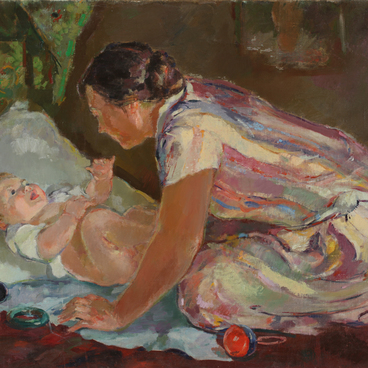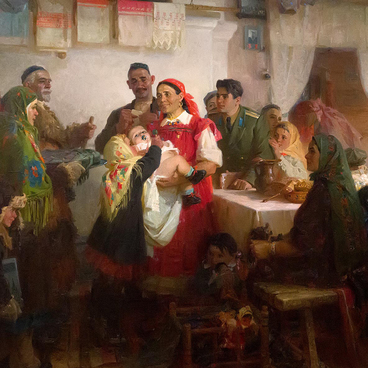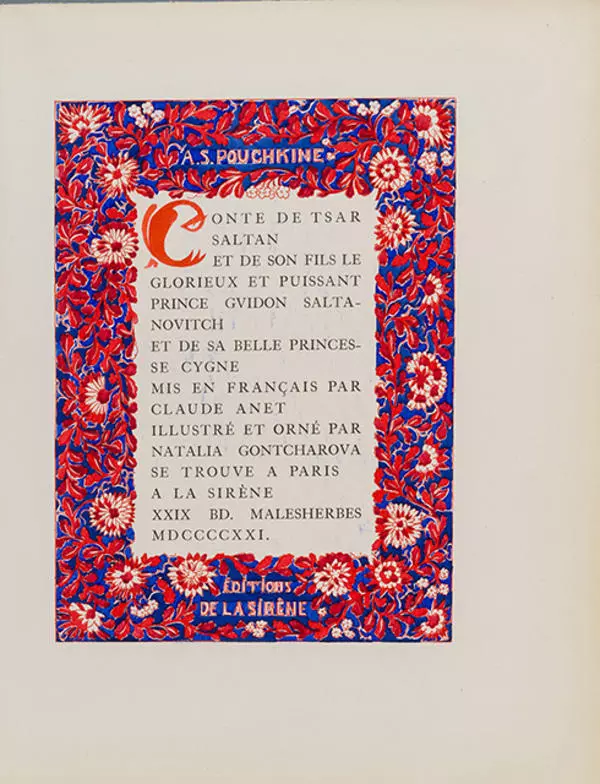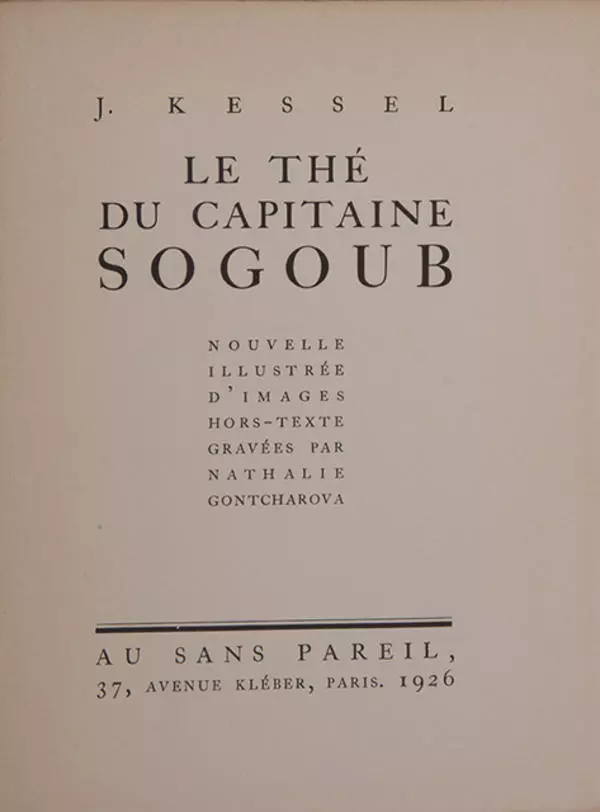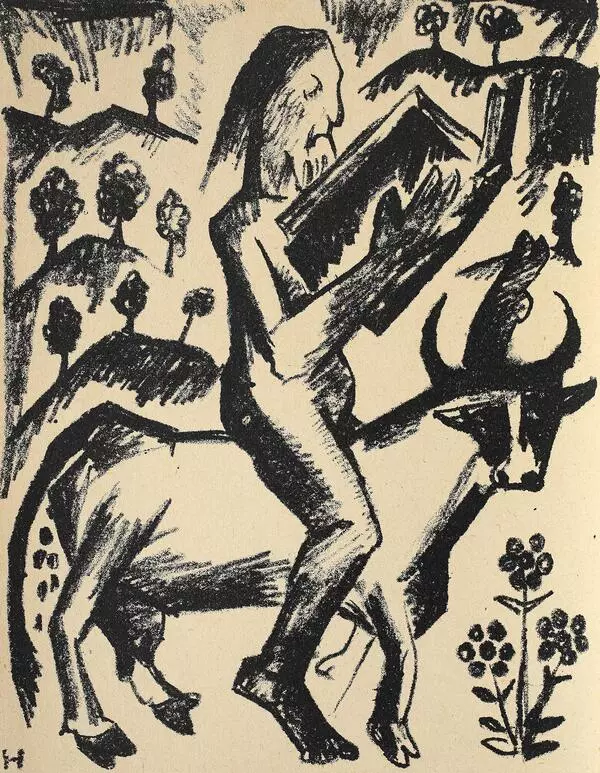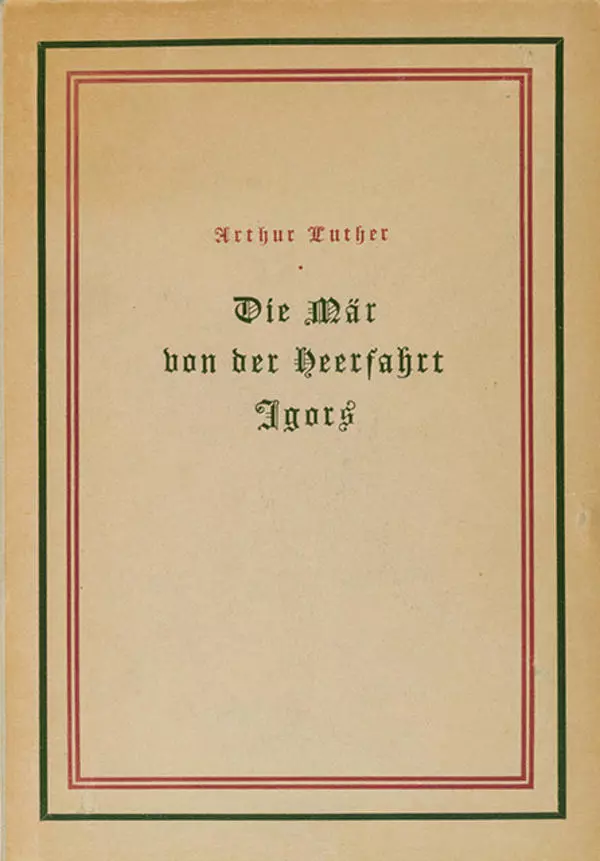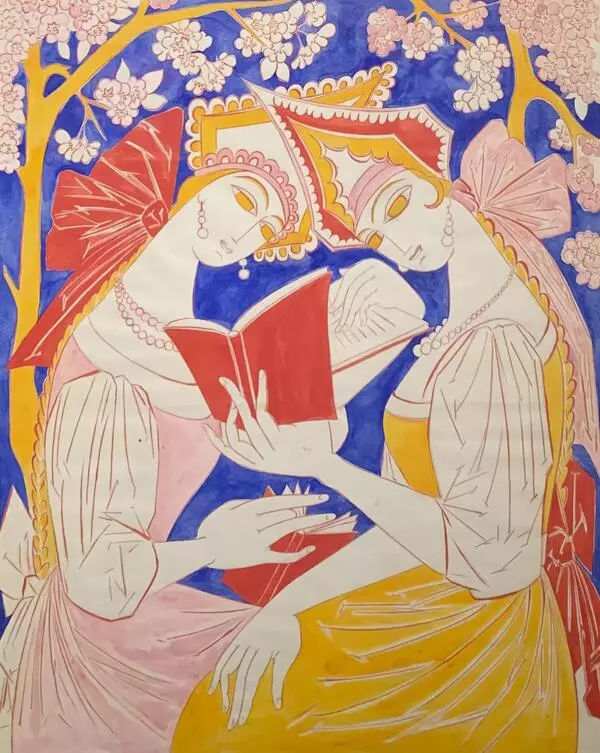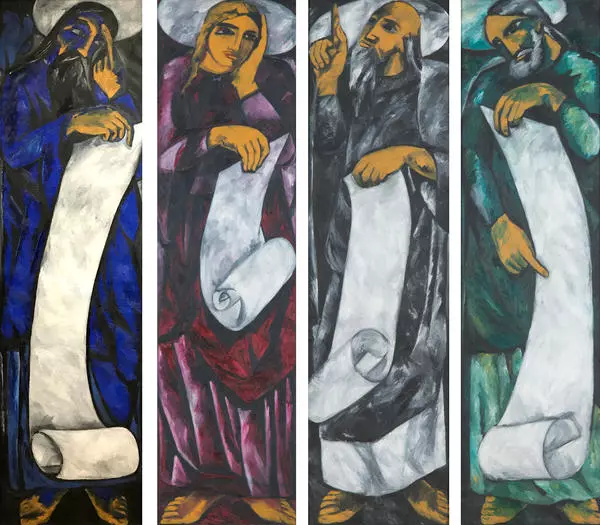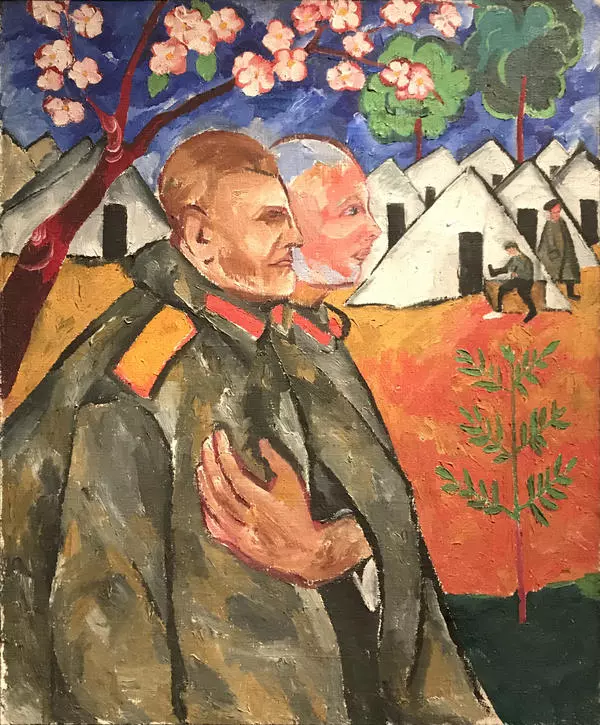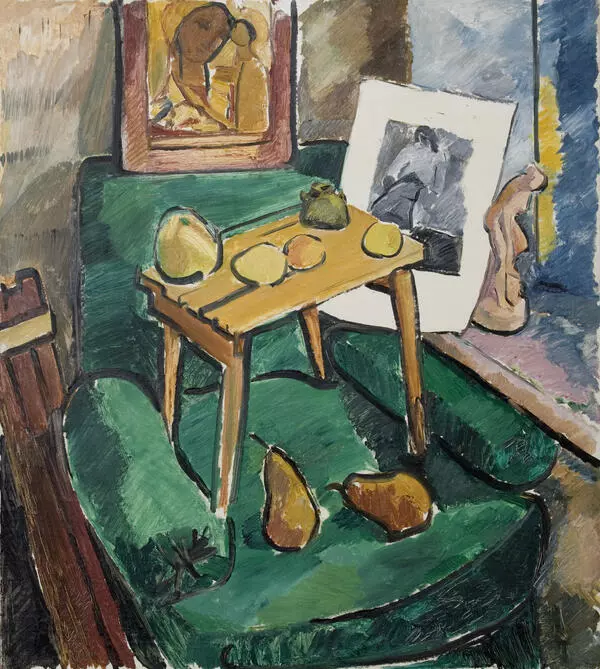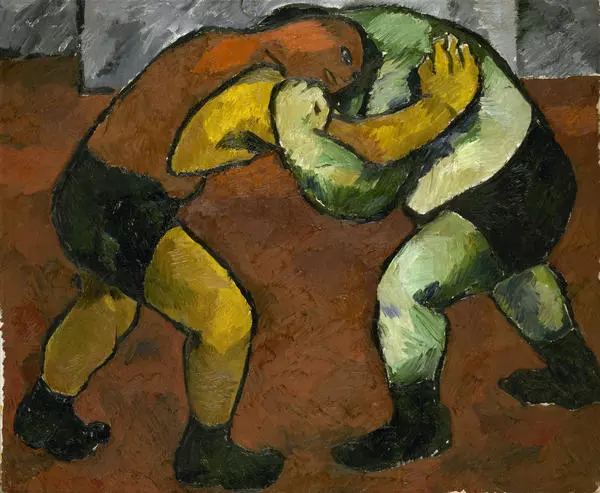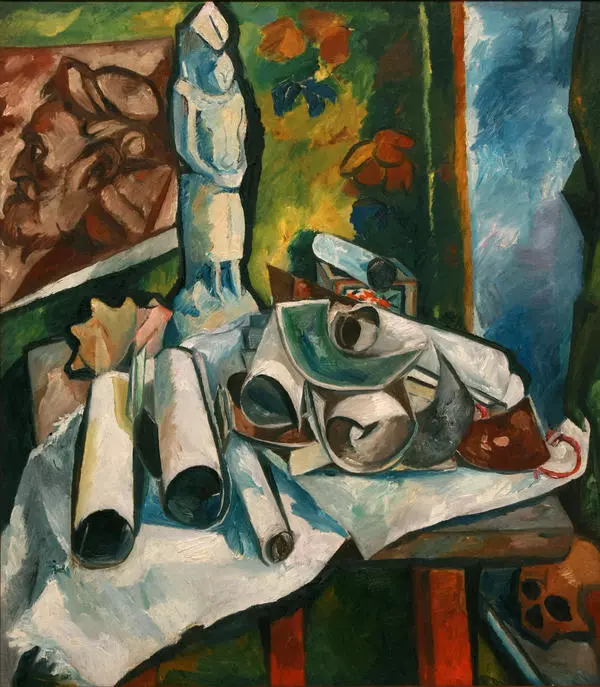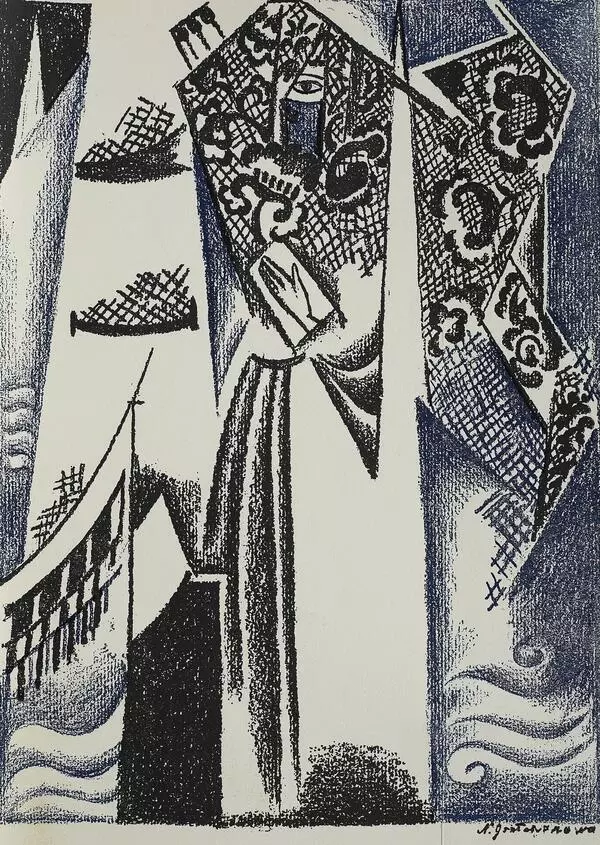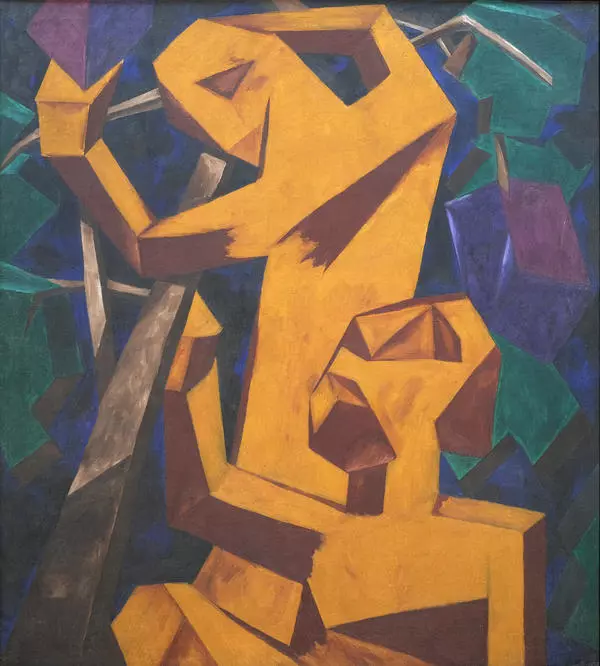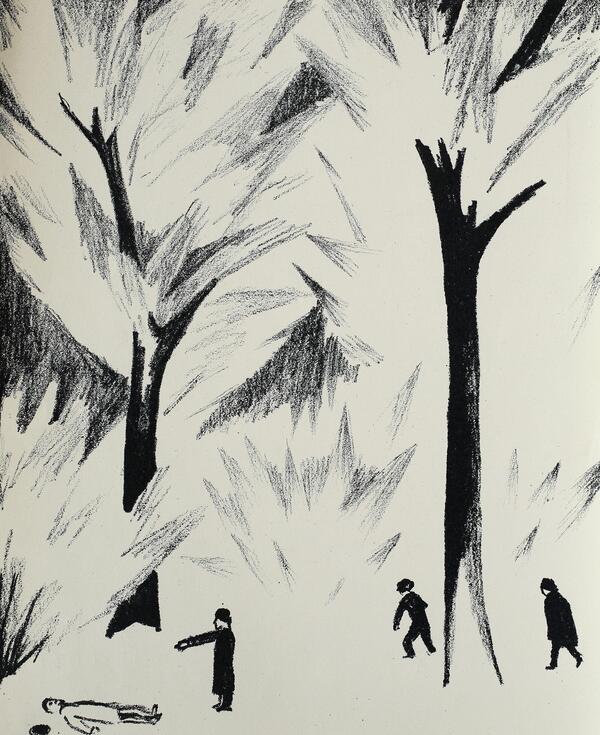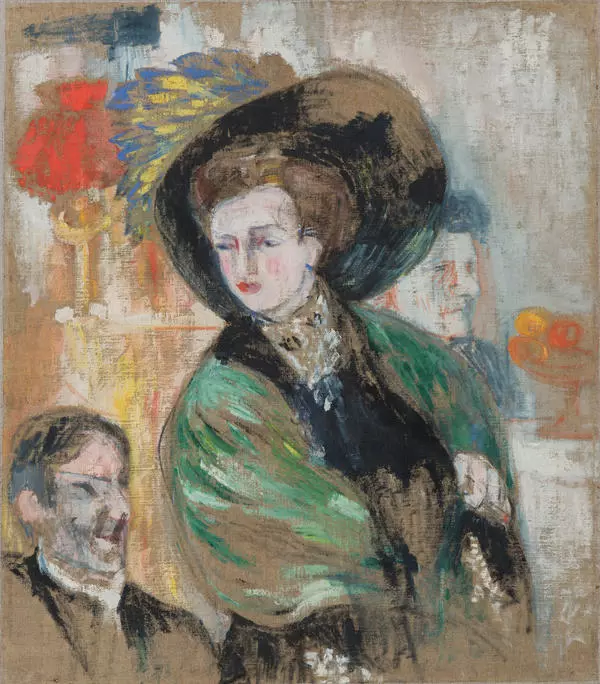Natalya Goncharova was Mikhail Larionov’s life partner and his closest like-minded associate almost all his life. The young artists met in the Moscow School of Arts, Sculpture and Architecture, when Goncharova was still a student at the department of culture. Soon she focused on painting and became fond of fauvism.
Later put herself to the research of archaic images of primitive art, Oriental miniature and icons. As a painter, she was developing alongside Larionov and at the same time inventing own creative language by working in a more expressionist manner of painting.
Together, Goncharova and Larionov developed a new style of abstract painting – Rayonism, created theatrical costumes and scenery for Ballets Russes by Serge Diaghilev. Together, they organised exhibitions of avant-garde societies Jack of Diamonds and Donkey’s Tail. At one of such exhibitions held in 1912 Goncharova’s eight religious pieces were confiscated at the insistence of the church.
The church took her experiments as a parody of icons: making icon-painting look similar to cheap popular prints seemed too grotesque. Yet, the artist knew religious scenes very well and was excellent at copying old techniques of the icon-painting schools of middle-aged Rus’. It was from those techniques that she borrowed edging and geometric figures.
The picture The Sabbath or Jews was created at the juncture of two styles – the peasant and religious ones. It became a kind of continuation of the evangelical series, to which it gets closer due to compositional techniques and the monumentality of the image. The picture’s characters are painted within the canvass so closely to one another that men’s legs are set at the lower edge of the picture while women’s heads look almost cut at its upper edge. An almost square format of the canvas makes it look static and emphasises the peace and stability of the sitting men dressed in the same grey suits. They embody the conservatism of traditional Jewish culture. By contrast, women are portrayed in bright clothes, they are turned right adding potential dynamics to the picture, willingness to move and to change.
Together, Goncharova and Larionov developed a new style of abstract painting – Rayonism, created theatrical costumes and scenery for Ballets Russes by Serge Diaghilev. Together, they organised exhibitions of avant-garde societies Jack of Diamonds and Donkey’s Tail. At one of such exhibitions held in 1912 Goncharova’s eight religious pieces were confiscated at the insistence of the church.
The church took her experiments as a parody of icons: making icon-painting look similar to cheap popular prints seemed too grotesque. Yet, the artist knew religious scenes very well and was excellent at copying old techniques of the icon-painting schools of middle-aged Rus’. It was from those techniques that she borrowed edging and geometric figures.
The picture The Sabbath or Jews was created at the juncture of two styles – the peasant and religious ones. It became a kind of continuation of the evangelical series, to which it gets closer due to compositional techniques and the monumentality of the image. The picture’s characters are painted within the canvass so closely to one another that men’s legs are set at the lower edge of the picture while women’s heads look almost cut at its upper edge. An almost square format of the canvas makes it look static and emphasises the peace and stability of the sitting men dressed in the same grey suits. They embody the conservatism of traditional Jewish culture. By contrast, women are portrayed in bright clothes, they are turned right adding potential dynamics to the picture, willingness to move and to change.

